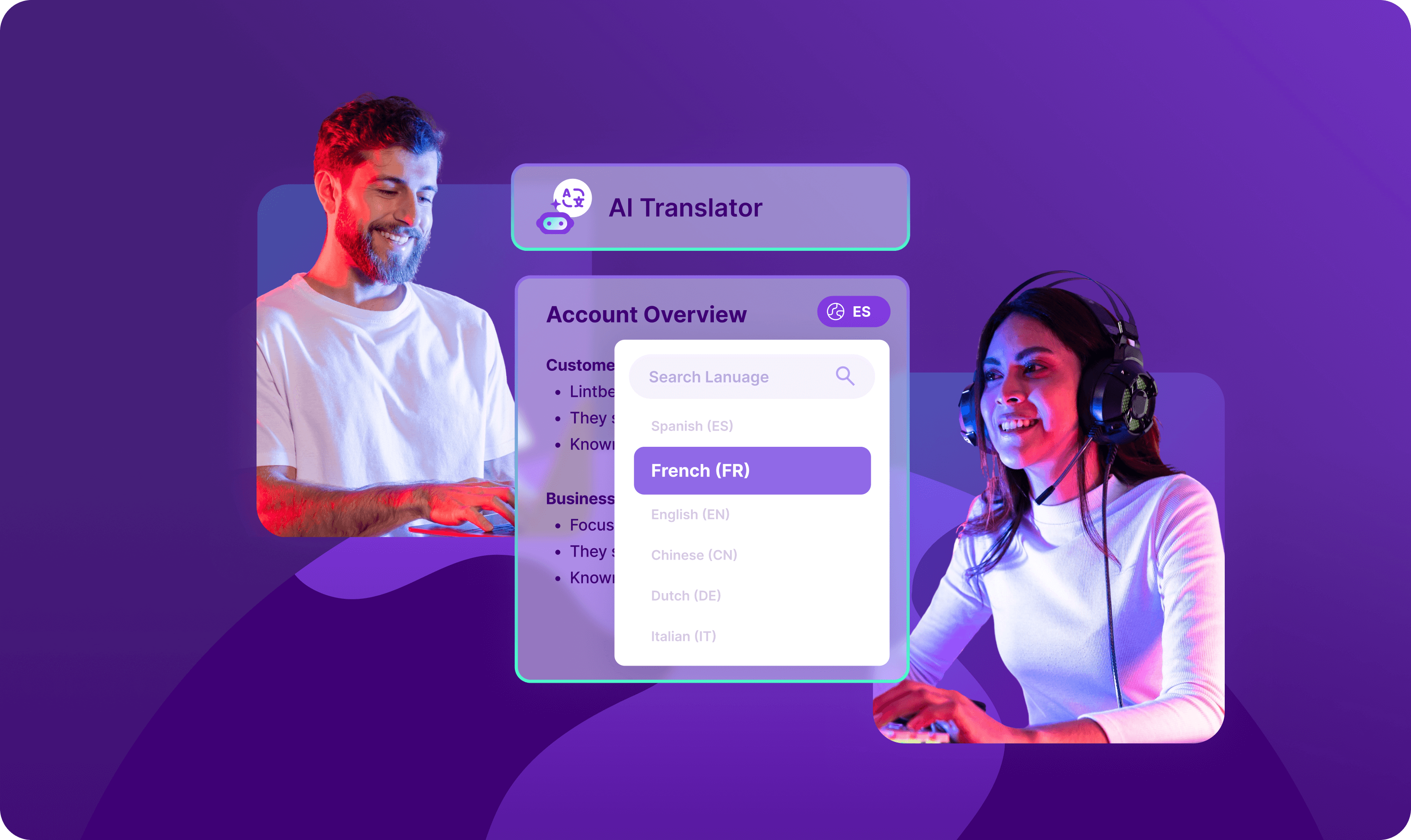Finally, a better way to align customer success and sales teams

Joanna Johnston
Senior Vice President, Customer Success
Published on: May 20, 2025

Even though we’re seeing sales and customer success (CS) more often part of the same GTM team, we’re still very different in our responsibilities.
On one side of the team, you have sellers focused on uncovering pain points and presenting their products as solutions to business problems — and on the other, customer success has the job of “making it work” through onboarding, adoption, renewal, and beyond.
Different incentives. Different goals. Different vantage points. And, sometimes, different information.
Naturally, this creates a default state of misalignment.
What happens is: Sales closes a deal, hands the customer off to CS, and without a reliable and repeatable way to effectively transfer all customer context, something gets missed. There’s simply too much interaction history to be completely and accurately transferred to another department over a quick sync or Zoom meeting.
So a ball gets dropped. It could be a customer need, an implementation requirement, an important deadline — whatever it is, it gets missed. The customer has to repeat themselves and doesn’t feel heard, and a new relationship is off to a rocky start.
The ripple effects of misalignment
When sales and CS aren’t aligned, the entire organization feels it.
Leaders have to get these two teams on the same page. Because what starts as a botched handoff becomes a bad first impression for a new customer — and the consequences don’t stop there.
The frustrated new customer, who now feels their needs weren’t understood during the sales process, enters problem-solving mode. They’ve invested their time and money and things aren’t going according to plan. So, they file complaints that get escalated and now require time from senior staff. They demand new features they thought already existed because of expectations set during the sales process. They consider whether they made the right purchase decision in the first place, making them a real churn risk.
This unsatisfied customer now becomes a significant drain on company resources. They become a fire that needs to be put out. A distraction not just to CS frontline staff, but managers — and, in some cases, executives.
But it doesn’t end there.
With internal resources and time being redirected and reallocated across the entire organization, the blame game begins. Did sales set unrealistic expectations? Did CS miss critical context when they took over the account? Misalignment now stands to severely impact culture within the organization, with departments pointing fingers at one another and getting frustrated with each other.
All because of misalignment that could have been prevented in the first place.
Building alignment from the ground up
When sales and CS aren’t talking enough, naturally the inclination is to get on a meeting and talk it out. While helpful, it’s not sustainable, nor a proactive solution.
Meetings just chew up more valuable time, keeping sales from selling and customer success from effectively engaging with customers.
To truly bring these two teams together, companies are leveraging the power of AI insights, embedded directly into existing workflows. They’re using revenue AI like Gong to capture every single customer interaction, from the very beginning, and convert them into a wealth of unstructured data from which AI agents can autonomously generate valuable insights to keep everyone on the same page.
This is the difference between reps adding notes to a CRM and hoping there’s enough there to get CS up to speed, and AI agents analyzing the entire interaction history and embedding actionable insights directly into a workflow. The latter enables a single source of truth — where needs, requirements, deadlines, and more are right there keeping everyone on the same page.
At Gong, we recently released the agent AI Briefer to do exactly this: Get everyone up to speed on the reality of an account (with no bias), instantly. No dropped balls. No fingers pointed.
The strategic advantage of agents
When companies transform from static CRM data and “more meetings,” to the world of AI agents using unstructured data to create a single source of truth, they unlock more than alignment for the entire organization. They make it so teams can move faster, make far fewer mistakes, and reach business goals sooner — which drives more predictable revenue as a result.
No more botched handoffs. No more escalations. No more putting out fires.
The result? Happier teams, satisfied customers, and a better way to move the business. forward
Misalignment is not just a communication issue. It’s a threat to company-wide effectiveness and collaboration.
Organizations that understand that, and take action, give themselves a strategic advantage and position themselves to win in 2025 — and beyond.
Discover more from Gong
Check out the latest product information, executive insights, and selling tips and tricks, all on the Gong blog.



